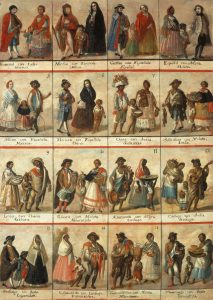In this week’s lecture we learned about how great of a year, 1942 was for Spain. It is explained that in January of that year, was the Fall of Granada, this being an end to the control of Moslem that lasted for eight hundred years. Then in March, ethnic cleansing of Jewish believers began. we learned that this cleansing went to waste as they now had to figure out how to manage the indigenous people of the “New World”.
Spain then began importing slaves from Africa. It is crazy how this is put as importing when these were not cases of food or necessities but people were taken from their homes and families. I then learned that the US had far less of a slave population than Mexico and Peru (who had the most), and Cuba, Hispaniola, and Brazil. This made me think of the term afro-Latinx. It’s interesting how you start putting the pieces of the puzzle together, I didn’t know that the largest population of slaves were in Mexico and Peru. As a Salvadoran (someone from El Salvador located in Central America) I was curious and looked up the numbers of West African people brought to El Salvador, it is 10,000 who were brought, over the span of 75 years.
The Casta paintings were a series of 16 paintings (either separately or divided onto one canvas) depicting the possible racial combinations that may arise in the new world. Here is the image I will be referring to…

These paintings show the assumptions and idealized expectations of relations involving all the possible combinations of racial mixes. It includes assumptions regarding status, wealth, family relations (how close children are with their parents, fighting amongst partners), the type of clothing they would wear, etc. Finally, the “families are arranged in order of highest to lowest status or wealth.
Spaniards are depicted as being of the highest status and dressed in elegant/fancy garb. They are also painted with this vibrant red.
The Indigenous and African people are depicted as of lower status and only of higher status when they are with a Spaniard. They (the Spanish painters) even try to label the mixes that may come up when the Spaniards, Indigenous and African mix (in the many ways its described in the above image).
Can you think of a similar example of a country labeling a group of people in an attempt to control them and confine them into certain characteristics?
Sarita
Things I noticed in Zoom class:
They make assumptions regarding family dynamics, but what is never addressed is the fact that most of these ‘families’ happen through sexual violence. The image is so idealized to think that the father would stay with mother and child. I am sure that their were some broken families, where in the case of Spaniard fathers most likey did not stay. it was also suggested that these images maybe sent to Spain to convey the idea that everything is “all good” in new America.
